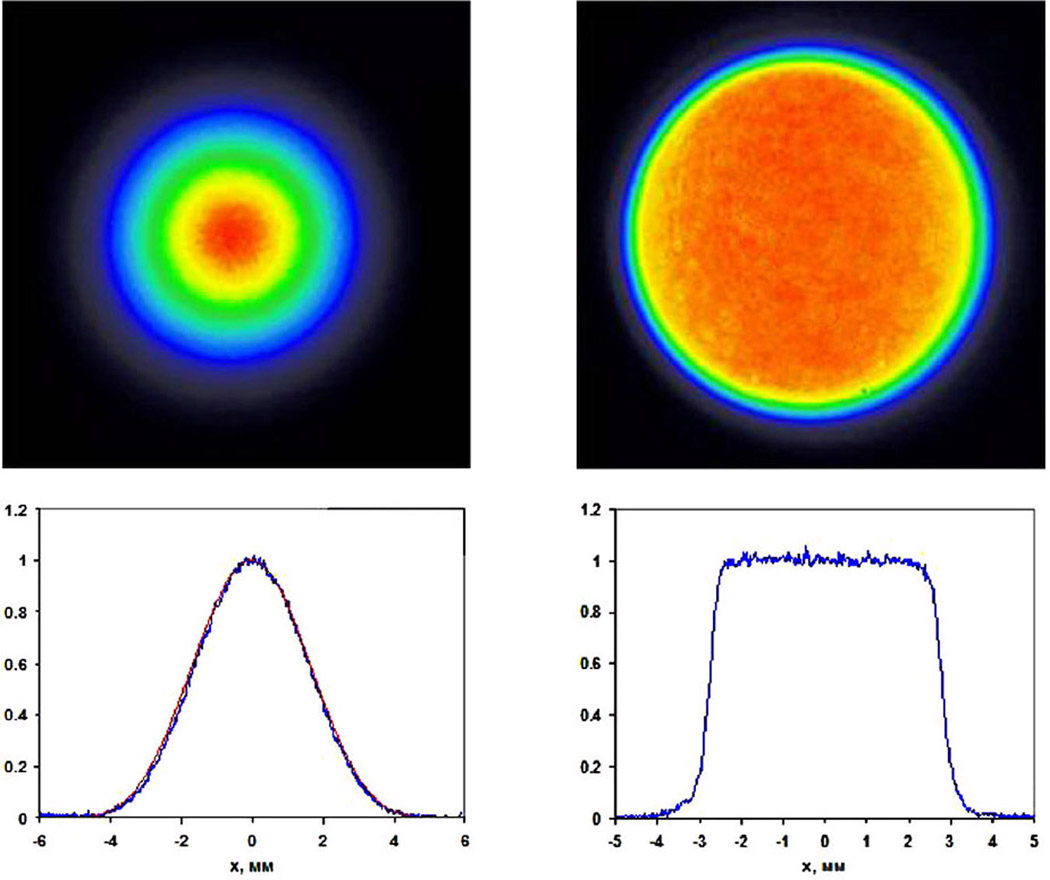All the Ophir Photonics links are bad.....
Not true--this one is still good:
Focal Spot Size Calculator | Gaussian Laser Beams
and
Laser Peak Power Calculator - Ophir
The other ones seem to be having a problem even from the Ophir site links--maybe server problem---all of them have always been good before.
EDIT: all the Ophir links are working again
also see:
https://en.wikipedia.org/wiki/Laser_beam_quality
Found ths good one:
"Limitations for the Focusing of Laser Beams"
"Laser beams can be used for transmitting optical energy to rather small spots or with low beam divergence over large distances. However, there are limitations to this, which involve the optical wavelength, the beam quality and the transverse size of the used focusing or collimation optics. Some of these limitations are discussed in the following, always assuming propagation of the beam through a homogeneous medium (i.e., with no added beam distortions on the way).
If a laser beam is focused to a spot (beam waist) with beam radius w0, it exhibits a certain beam divergence angle which is inversely proportional to the waist beam radius and proportional to the optical wavelength in the M2 factor:
The used focusing optics must be able to handle that amount of beam divergence; a limitation for that results from the limited numerical aperture of the optics. Also, if the focus has to have a large distance from the focusing optics and/or the waist beam radius is small or the beam quality is low, the beam radius in the focusing optics will necessarily be quite large. A correspondingly large open aperture of the optics is required. Such factors can in practice set a lower limit to the achievable beam radius in the focus, or an upper limit to the tolerable M2 factor of the beam.
In some cases, one optimizes the beam radius in the beam focus such that the beam radius at a certain distance from the focus is as small as possible. For that purpose, one has to choose the waist beam radius such that the effective Rayleigh length of the beam equals the mentioned transmission distance. The resulting beam radius at the distant position will then be ≈1.41 times the waist beam radius.
If the sent-out beam does not have to have its focus at the focusing optics, one should place the focus in the middle between the optics and the distant point. Ideally, the effective Rayleigh length will then be half the transmission distance. The beam radius at the distance spot will be identical to that at the focusing optics, and ≈1.41 times larger than in the beam focus.
For example, if a Gaussian laser beam at 1064 nm should be sent to the moon (distance 380 000 km) in order to illuminate a small spot there, the ideal beam radius in the focus will be 8 m, such that the Rayleigh length is 190 000 km. The beam radius in the focusing optics and on the moon will then be 11.3 m. If the used sending telescope cannot be that large, the illuminated spot on the moon will be larger.
When creating a beam focus in some distance from some focusing optics with a limited open aperture, the possible waist beam radius will increase if that distance is increased. Furthermore, there is a maximum to that distance; in the extreme case, the distance equals the effective Rayleigh length of the beam, and the resulting waist beam radius will be smaller than the beam radius at the focusing optics by the square root of 2 (≈1.41). One can thus easily calculate the Rayleigh length based on the initial beam radius and thus the maximum focusing distance." ~ from middle section of:
https://www.rp-photonics.com/laser_beams.html




